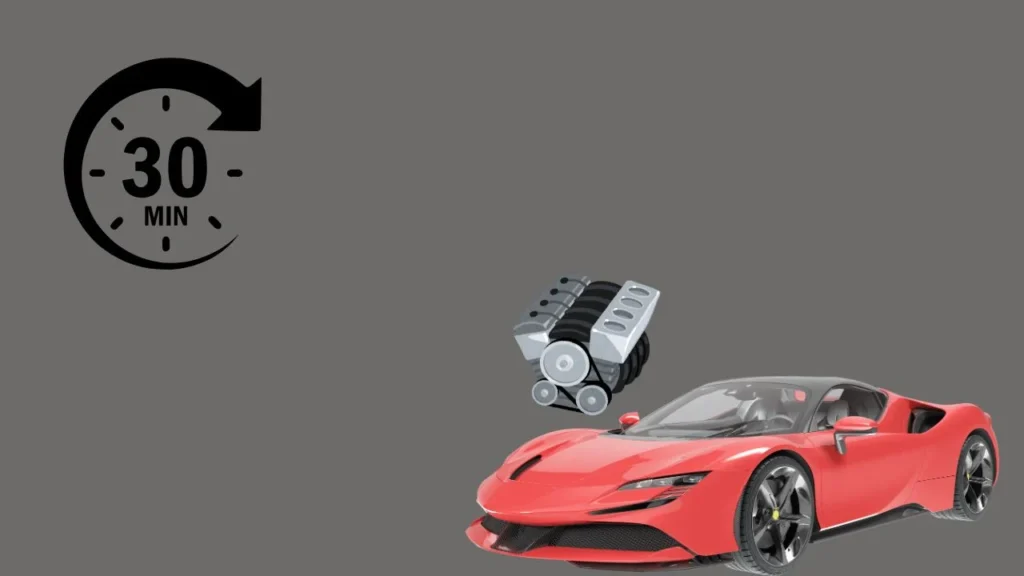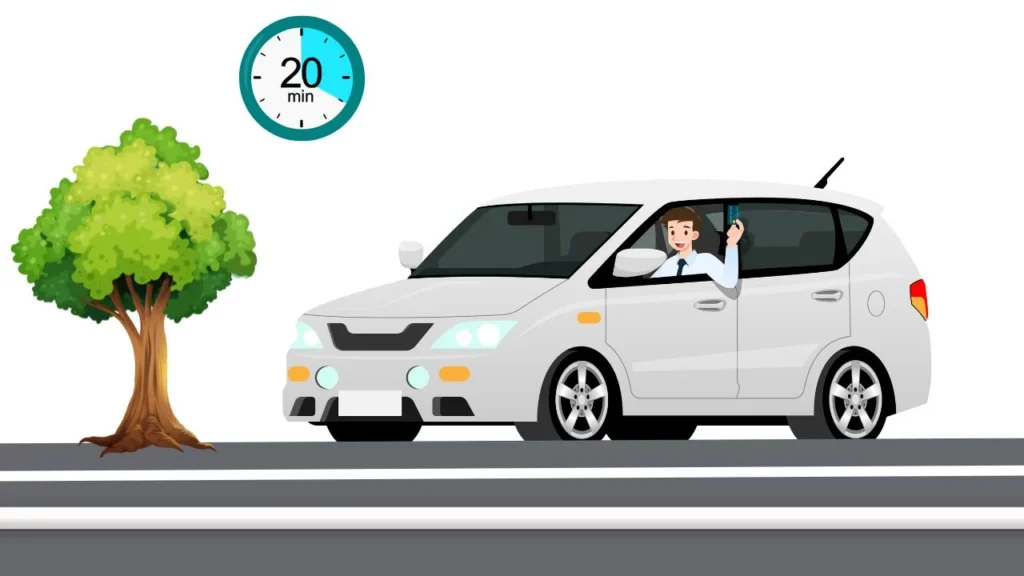Think about this you just jump-started your car, and it’s running again. Feels good, right? But if you don’t handle what to do after jump starting car properly, you might be stuck again in no time. I’ve been there, and trust me, a second breakdown is even more frustrating.
Quick Look
A jump-start is just the first step. Keep your engine running for 30-45 minutes and drive at least 10-15 miles to recharge the battery. If your battery dies again within 24-48 hours, it might be time for a replacement. Regular post jump-start car maintenance, such as battery checks every 6 months and replacing it every 3-5 years, can help avoid unexpected breakdowns. For more information, check out our guide on why your car battery might fail.
Immediate Steps After a Jump-Start
Alright, buddy, your car is running again after a jump-start, but don’t make the mistake of turning it off too soon! Many people do this and end up stranded again. Here’s what you need to do right now to keep your car running smoothly and follow some car battery recovery tips to ensure it stays in top shape. Learn more about jump-starting a car safely in the rain here to avoid any risks and get your car back on track.
Keep the Engine Running for at Least 30 Minutes

Your battery is still weak. Let the engine run for at least 30 minutes so the alternator can recharge it. If the battery was completely dead, keep it running for 45 minutes. Turning it off too soon might leave you stuck again.
Do NOT Turn Off the Car Immediately

A weak battery needs time to regain power. If you turn it off too soon, it might not start again. If your alternator is weak, the battery won’t charge properly. If your battery is over 3 years old, it may struggle to hold a charge, even after running. To avoid issues, make sure to follow Using the Stanley Fatmax Jump Starter: Easy Instructions to ensure a smooth process and prevent further damage to your car’s electrical system.
Driving to Recharge the Battery

Friends, once your car is running, drive for at least 15 to 20 minutes to recharge the battery. Keep your speed above 30 mph and avoid turning off the car too soon. If the battery still struggles after a good drive, it may need replacing. Find out more about why your car only starts with a jump here.
Checking Battery & Electrical Components

Check the Battery Cables & Terminals
- Look for corrosion – If you see a white or greenish powder on the terminals, clean it up. Corrosion messes with the power flow.
- Check if the cables are tight – If the connections are loose, your car might die again. Grab a wrench and tighten them if needed.
- Inspect for cracks or damage – If your battery cables are worn out, they won’t deliver power properly. Replace them if they look bad.
Turn Off Power-Draining Accessories
- AC or heater – These suck up 30-50 amps of power. Keep them off.
- Headlights & fog lights – Unless it’s dark, turn them off. They use around 10-20 amps.
- Radio & phone charger – Small things, but they add up. Every bit of power counts.
Watching for Warning Signs

Friends, just because your car is running after the jump doesn’t mean the problem is solved. Keep an eye out for warning signs and be mindful of how to prevent car battery problems, or you might end up stranded again. Check out more on why your car won’t start even with a new battery.
1. Listen for Strange Noises
Turn off the music and pay attention. If you hear clicking, whining, or grinding under the hood, something’s off. A weak battery or a failing alternator could be causing it. If your car sounds different than usual, don’t ignore it.
2. Watch for Dim Headlights or Flickering Dashboard Lights
Your headlights should stay bright. If they look dimmer than usual or your dashboard lights flicker, that’s a bad sign. A healthy battery keeps everything stable if it’s struggling, your battery or alternator isn’t doing its job.
3. Slow Cranking When Restarting
After driving for 30 to 45 minutes, try turning the car off and restarting it. If the engine cranks slowly or takes longer than 3–5 seconds to start, your battery is still weak. That’s a red flag it might not hold a charge for long.
4. Check for Battery or Electrical Warning Lights
If a battery icon pops up on your dashboard, take it seriously. That means the battery isn’t charging properly or your alternator is failing. Some cars also show an “ALT” or “CHARGE” light don’t ignore those either.
5. Power Windows and Radio Acting Up
Test your windows and radio. If your windows roll up slower than usual or your radio cuts out randomly, it’s another sign your battery is struggling. Weak batteries mess with electronics first before completely dying.
Testing & Replacing the Battery
Alright boss, now that your car is running, let’s talk about testing your battery because a jump-start is just a temporary fix. If the battery isn’t holding a charge, you might be stuck again soon. So, what to do after jump starting a car? Let’s check it out and learn how to avoid car breakdowns.
Test the Battery with a Multimeter
Step 1: Set the Multimeter

Start by turning the dial to DC voltage (20V setting) so you can measure your car battery correctly.
Step 2: Connect the Probes

Place the red probe on the positive terminal (+) and the black probe on the negative terminal (-). Make sure they are firmly connected to get an accurate reading.
Step 3: Read the Voltage

Now, look at the numbers on the multimeter screen. If it shows 12.6V or higher, your battery is in good condition. If it’s between 12.4V – 12.5V, it’s weak but still usable. If the reading is below 12.2V, the battery is struggling and may die soon. But if it’s below 12V, it’s time for a replacement because this battery won’t last much longer.
Step 4: Monitor for Voltage Drops

If the voltage keeps dropping even after driving for a while, your battery isn’t holding a charge. That’s a clear sign it’s time for a new one. It’s better to replace it now to maintain car battery health than to get stranded with a dead battery when you least expect it. If you’re wondering what to do after jump starting a car, make sure to get your battery checked to avoid further issues.
Signs You Need a Mechanic Right Now:
- Your car stalls while driving This could mean the alternator is failing.
- Battery dies again even after a long drive The battery might be completely dead.
- Clicking sound when starting the car This points to a weak battery or starter problem.
- Dim headlights or flickering dashboard lights Could be a sign of alternator failure.
Key Takeaways
- If your car keeps dying within 24-48 hours after a jump, get it checked by a mechanic.
- Driving at least 10-15 miles a few times a week helps keep your battery healthy.
- Replace your battery every 3-5 years to avoid unexpected breakdowns.
Final Words
Dealing with a dead battery is frustrating, but knowing what to do after jump starting a car can save you from bigger issues. Keep your engine running, drive enough miles, and monitor your battery’s health. If your car keeps stalling or the battery dies again within 24-48 hours, don’t wait get it checked by a mechanic. Stay proactive by testing your battery every 6 months and replacing it every 3-5 years. Follow these steps, and you’ll avoid unexpected breakdowns.
FAQs
Q1. How long should I let my car run after a jump-start?
You should let your car run for at least 30-45 minutes or drive 10-15 miles to allow the alternator to recharge the battery properly.
Q2. Why does my car battery keep dying even after a jump-start?
If your battery keeps dying within 24-48 hours, it could be due to a weak battery, faulty alternator, or electrical issues get it checked by a mechanic.
Q3. Can I turn off my car immediately after a jump-start?
No, turning off your car too soon can leave your battery undercharged. Always keep it running for at least 30 minutes before shutting it off to allow a proper car electrical system check.
Q4. When should I replace my car battery after jump-starting?
If your battery struggles to hold a charge even after multiple jump-starts, it’s time to replace it. Most car batteries last 3-5 years before needing a replacement, so make sure you’re following proper car battery charging tips to avoid this issue.




